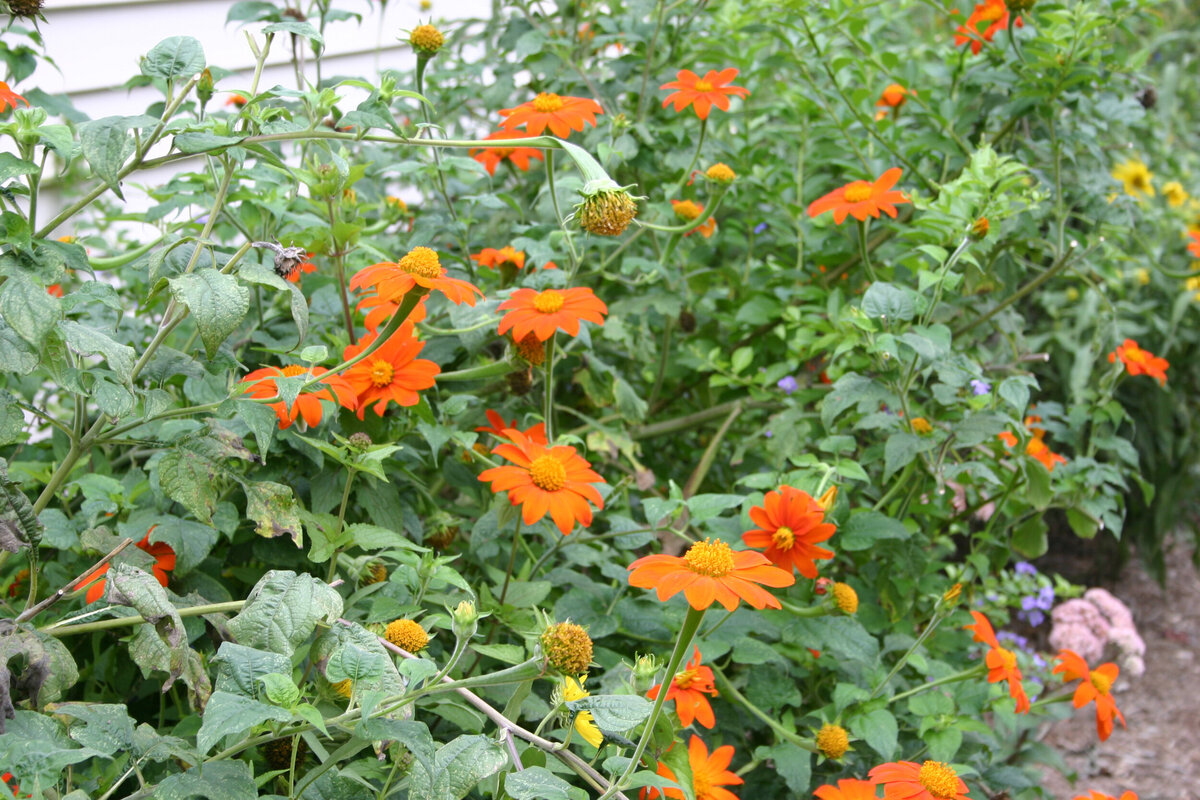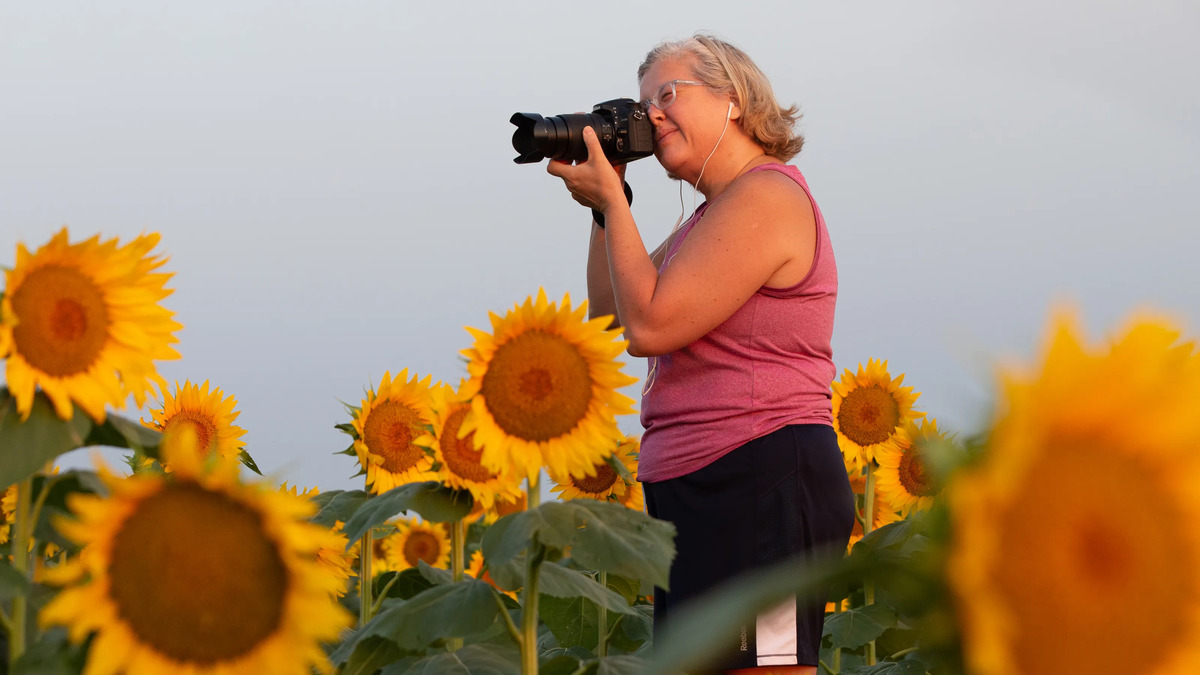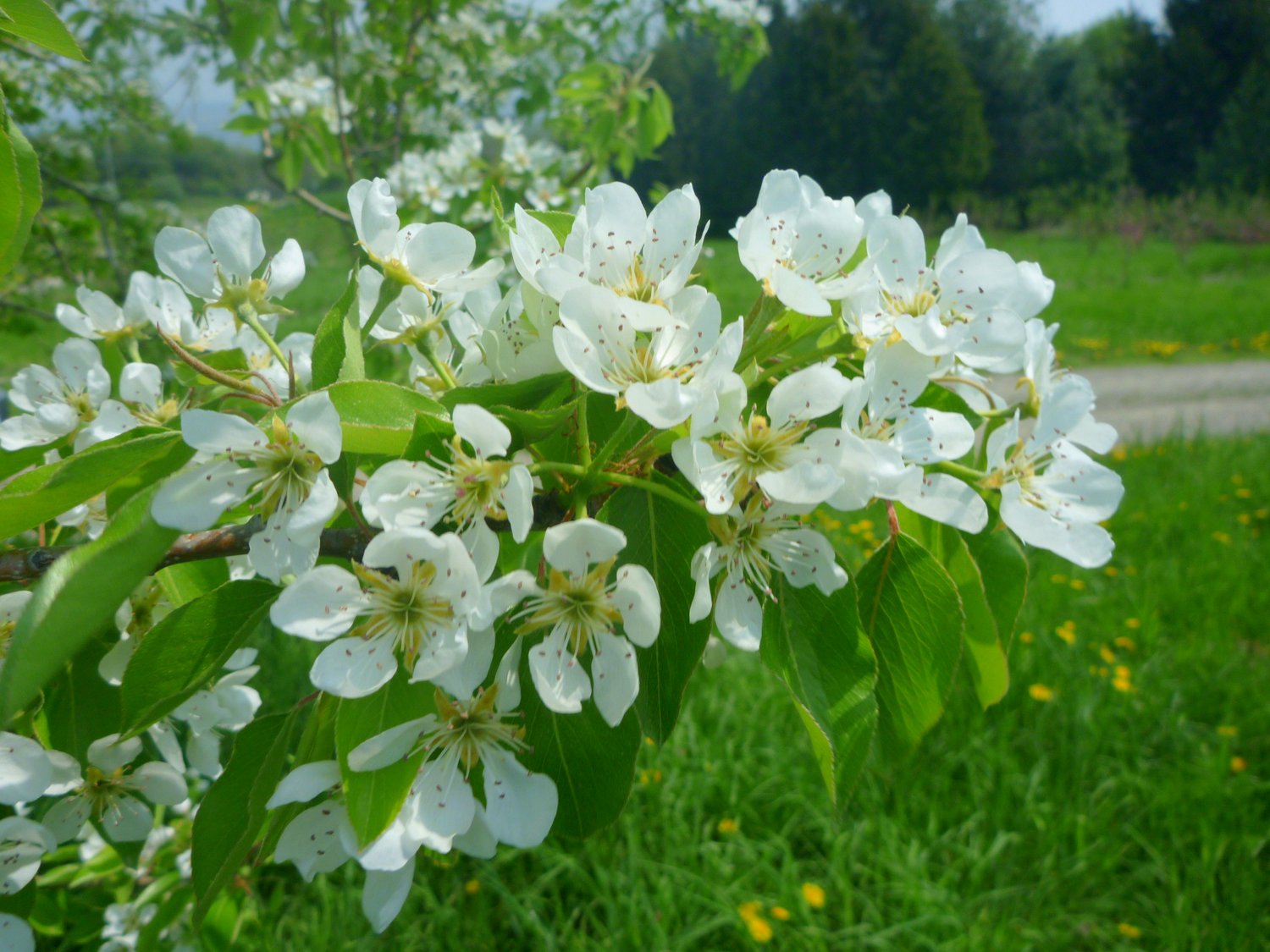Home>Types of Gardening>Ornamental Gardening>When Does Clover Stop Blooming


Ornamental Gardening
When Does Clover Stop Blooming
Modified: January 22, 2024
Learn about the blooming period of clover in ornamental gardening. Discover when clover stops blooming and how to keep your garden vibrant all year round.
(Many of the links in this article redirect to a specific reviewed product. Your purchase of these products through affiliate links helps to generate commission for Chicagolandgardening.com, at no extra cost. Learn more)
Table of Contents
Introduction
Clover, with its vibrant blooms and lush green foliage, is a beloved ornamental plant in many gardens. This versatile plant not only adds color and beauty to landscapes but also attracts beneficial insects and improves soil health. As you tend to your garden, you may find yourself wondering when exactly does clover stop blooming?
Understanding the factors that influence the blooming period of clover can help you plan and manage your garden more effectively. From temperature and climate to daylight hours and soil conditions, several variables affect when clover will bloom and eventually stop blooming. This knowledge allows you to make informed decisions about the types of clover to grow and the necessary maintenance practices to ensure optimal blooming periods.
In this article, we will explore the various factors that can impact the blooming period of clover. Whether you’re a seasoned gardener or just starting your ornamental gardening journey, this information will provide valuable insights into when to expect the end of clover blooming and what signs to look for. By understanding the unique requirements of clover and implementing effective strategies, you can enjoy the beauty of this stunning plant throughout the growing season.
Factors Affecting Clover Blooming Period
The blooming period of clover is influenced by a variety of factors that can vary depending on the specific species or variety. Understanding these factors is essential for successfully managing and promoting blooms in your garden. Let’s explore some of the key factors that impact the clover blooming period:
- Temperature and Climate: Temperature plays a crucial role in determining when clover will bloom. Different clover species have specific temperature requirements for initiating blooming. Generally, clover prefers cooler temperatures, with an optimal range between 50°F to 80°F (10°C to 27°C). Warmer climates may cause clover to bloom earlier in the season, while colder climates may delay the blooming process.
- Daylight Hours: The length of daylight hours also affects the blooming period of clover. Clover is a short-day plant, meaning it requires longer nights and shorter days to trigger flowering. As the days grow shorter in the late summer and early fall, clover will typically start blooming. Conversely, longer days in the spring and summer can inhibit blooming.
- Soil Conditions: The health and fertility of the soil in which clover is grown can greatly impact its blooming period. Clover prefers well-drained soil with a neutral pH level. If the soil is too acidic or alkaline, it may hinder the plant’s nutrient uptake and affect blooming. Adequate moisture and proper soil fertility are also crucial for promoting healthy growth and blooming.
These are just some of the factors that influence the blooming period of clover. It’s important to consider these factors and make any necessary adjustments to optimize blooming in your garden. By providing the right environmental conditions and understanding the unique requirements of your chosen clover variety, you can extend the blooming period and enjoy the charming blooms for longer.
Temperature and Climate
Temperature and climate are crucial factors that directly impact the blooming period of clover. Different clover species have specific temperature preferences for initiating and sustaining blooming. Understanding these temperature requirements is essential for cultivating a flourishing clover garden.
Clover generally thrives in cooler temperatures, with an optimal range between 50°F to 80°F (10°C to 27°C). In warmer climates, clover tends to bloom earlier in the season, while in colder regions, the blooming period may be delayed. Extreme heat can cause stress to the plant and may shorten the overall blooming duration.
When planting clover, it’s important to consider the temperature patterns in your region. Some species, such as white clover (Trifolium repens), are more adaptable to a wide range of climates. Others, like red clover (Trifolium pratense), prefer cooler temperatures and may struggle in warmer regions.
To optimize clover blooming, it is advisable to plant the appropriate species or cultivar that is well-suited to your local climate. Research local weather patterns and consult with local gardening experts or nurseries to select the right clover variety. By choosing the right clover species for your climate, you can ensure a longer and more abundant blooming period.
In addition to temperature, climate also plays a significant role in clover blooming. Regions with consistent mild temperatures and moderate rainfall throughout the growing season provide optimal conditions for clover growth and blooming. These climates typically support healthy foliage development, which leads to vigorous blooming.
However, even in less favorable climates, clover can still thrive with proper care and management. Adequate irrigation and supplementary shade during excessively hot periods can help mitigate the negative effects of high temperatures. Mulching the soil can also aid in moisture retention and provide insulation for the plant’s root system.
By understanding the temperature and climate requirements of your chosen clover species, you can create an environment that promotes abundant blooming and ensures the long-term health of your plants.
Daylight Hours
Daylight hours play a crucial role in determining the blooming period of clover. Clover is classified as a short-day plant, meaning it requires longer nights and shorter days to trigger flowering. The length of daylight hours directly influences the plant’s internal biological clock and initiates the blooming process.
As the days lengthen in spring and summer, the increased amount of daylight can inhibit clover blooming. It is during this time that clover focuses its energy on vegetative growth rather than flowering. However, as the days become shorter in the late summer and early fall, the reduced daylight hours signal to the clover plant that it is time to transition into the blooming stage.
It’s important to note that the specific light requirements may vary depending on the clover species or variety. Some varieties may require a certain minimum number of daylight hours before they begin blooming. This photoperiod sensitivity can vary significantly, with some clover varieties requiring as little as 8 to 10 hours of daylight, while others may need up to 14 to 16 hours.
To manipulate the blooming period of clover, gardeners can use techniques such as artificial lighting or shade cover. By providing additional darkness during the day, such as using blackout curtains or creating shade structures, one can extend the blooming period of clover. This is particularly useful in regions with long daylight hours in the spring and summer.
Understanding the daylight requirements of your chosen clover variety allows you to plan and anticipate when the blooming period will occur. By adjusting lighting conditions or selecting varieties that align with your local daylight patterns, you can effectively manage and enjoy the vibrant blooms of clover in your garden for an extended period.
Soil Conditions
The health and fertility of the soil in which clover is planted play a vital role in determining its blooming period. Proper soil conditions are essential for providing the necessary nutrients and a suitable growing environment for clover to thrive and produce abundant blooms.
Clover prefers well-drained soil with a neutral pH level ranging from 6.0 to 7.0. Soil that is too acidic or alkaline can hinder the plant’s nutrient uptake, affecting its overall health and blooming capacity. Conducting a soil test can help determine the pH level and enable you to apply any necessary amendments, such as lime or sulfur, to achieve the optimal pH range.
In addition to pH level, soil fertility is crucial for promoting healthy growth and blooming in clover. Nitrogen is an essential nutrient for clover, as it influences its vegetative growth and blooming potential. Clover has a unique ability to fix atmospheric nitrogen through a symbiotic relationship with nitrogen-fixing bacteria present in nodules on its roots. This characteristic allows clover to thrive in low-nitrogen environments and contribute to soil fertility.
However, if the soil is significantly deficient in nitrogen, it may result in reduced blooming. Supplemental fertilization or incorporating nitrogen-rich organic matter into the soil can help provide the necessary nutrients to support vigorous growth and blooming in clover. It’s important to follow recommended fertilizer application rates to avoid overfertilization, which can lead to excessive vegetative growth at the expense of blooming.
Moisture management is also essential for optimal blooming. Clover prefers moist soil but can tolerate drought conditions. Adequate irrigation practices, such as consistent watering when needed, help maintain soil moisture levels and ensure the plant has sufficient water to support blooming. However, overly soggy or waterlogged soil can negatively impact root health and blooming, so proper drainage is vital.
By maintaining well-drained soil with the proper pH level, ensuring adequate soil fertility, and managing soil moisture effectively, you can create an ideal environment for clover to thrive and showcase its vibrant blooms throughout the blooming period.
Clover Varieties and Cultivars
When it comes to clover blooming periods, the specific variety or cultivar you choose plays a significant role. Different clover varieties have unique characteristics, including variations in blooming periods and durations. Understanding the traits and blooming habits of different clover varieties enables you to select the ones that best align with your garden goals and desired blooming periods.
White Clover (Trifolium repens) is a common clover species that is well-known for its ability to form dense low-growing mats and attract beneficial pollinators. This perennial species typically blooms in the late spring and early summer, providing a burst of white or pinkish blooms to the landscape. It’s important to note that white clover tends to have a long blooming period, often extending into the fall under favorable conditions.
Red Clover (Trifolium pratense), another popular clover species, offers stunning deep pink to purple flower heads. Red clover typically blooms in late spring or early summer and has a moderately long blooming period, lasting for several weeks. This species is often used as a green manure cover crop, providing nitrogen enrichment to the soil.
Crimson Clover (Trifolium incarnatum) is beloved for its brilliant crimson blooms that add a striking splash of color to gardens. This annual clover species blooms in spring or early summer and has a relatively short blooming period, typically lasting for a few weeks. However, it may re-bloom later in the season if the plants are cut back after the initial blooming period.
Various cultivars of clover have been developed to offer specific traits and adaptability to different growing conditions. For example, Ladino clover (Trifolium repens ‘Ladino’) is a popular cultivar known for its large white flowers and vigorous growth. It has a longer blooming period compared to other white clover varieties. Selecting the right cultivar that suits your climate and growing conditions can help extend the blooming period and achieve optimal results.
When choosing clover varieties and cultivars, consider factors such as climate suitability, desired blooming period, growth habit, and intended purpose (e.g., ground cover, wildlife habitat, soil improvement). Consulting with local gardening experts, nurseries, or agricultural extension services can provide valuable guidance and recommendations for selecting the most suitable clover varieties for your specific needs and blooming preferences.
Management Practices
Implementing effective management practices is essential for promoting optimal blooming periods in clover. By adopting these practices, you can create an environment that encourages healthy growth and extends the blooming duration. Here are some key management practices to consider:
- Proper Timing for Planting: Planting clover at the right time is crucial for maximizing blooming potential. Depending on the specific variety and local climate, clover is typically planted in early spring or late summer to early fall. This timing allows the plants to establish strong root systems and be ready for blooming when the ideal conditions arrive.
- Regular Moisture: Clover prefers moist soil, especially during periods of active growth and blooming. Regular watering is essential, especially during dry spells, to ensure adequate moisture. However, avoid overwatering, as excessively wet soil can lead to root rot and hinder blooming.
- Weed Control: Maintaining weed-free surroundings is important to avoid competition for resources and sunlight. Regular weeding or the use of mulch can help suppress weed growth and ensure that clover receives the necessary nutrients and light to flourish.
- Fertilization: While clover is a nitrogen-fixing plant, applying phosphorus and potassium fertilizers can help support optimal growth and blooming. Conduct a soil test to determine the nutrient deficiencies, and apply fertilizers accordingly following recommended rates and application methods.
- Mowing and Pruning: Regular mowing and pruning can rejuvenate clover plants and encourage more compact growth and blooming. However, timing is crucial. Avoid mowing or pruning during the primary blooming period to prevent interference with the flowering process. Instead, perform these tasks before or after the blooming period.
- Deadheading Spent Blooms: Removing faded or spent blooms, a process known as deadheading, can promote continuous blooming. Deadheading redirects the plant’s energy from seed production to new flower development, prolonging the blooming period. Carefully trim off the spent blossoms with sharp shears or pinch them off with your fingers.
By incorporating these management practices into your gardening routine, you can create a thriving environment for clover, maximize blooming potential, and enjoy the beauty of the plant for an extended period of time.
Signs of Clover Blooming Completion
As the clover blooming period nears its end, there are several signs and indicators that can help you determine when the blooming cycle is reaching completion. Recognizing these signs allows you to plan and prepare for the next stages of growth and maintenance in your garden. Here are some common signs of clover blooming completion:
- Fading Blooms: One of the most noticeable signs of blooming completion is the gradual fading and wilting of the clover blooms. The vibrant colors that once adorned your garden will lose their intensity and become duller in appearance.
- Reduced Flower Production: As the blooming period progresses, the frequency and quantity of new flower buds being produced will start to decline. The plant begins to shift its focus towards seed production and preparing for the next stage of its life cycle.
- Seed Formation: Clovers, like many flowering plants, produce seeds after blooming completes. This is an important phase for the plant’s reproductive cycle. You may notice small seed pods or capsules developing where the flowers were previously located.
- Increased Leaf Growth: Following the blooming period, clover plants devote more energy to vegetative growth. You might observe a surge in leaf production as the plant stores nutrients and prepares for future growth and blooming cycles.
- Change in Plant Behavior: As the blooming period ends, you may notice a shift in the behavior of the clover plants. They might become less visually prominent, with the blooming spectacle giving way to a more subtle presence in your garden.
It’s important to note that the exact duration and signs of clover blooming completion can vary depending on the specific clover variety, climate, and local growing conditions. Observing your plants closely and recognizing these signs will help you plan your maintenance activities, such as pruning, fertilization, and reseeding, to ensure continued health and blooming success in future seasons.
Conclusion
Clover, with its beautiful blooms and beneficial qualities, adds a touch of vibrancy to any ornamental garden. Understanding the factors that affect the blooming period of clover is essential for successful gardening and optimal enjoyment of its beauty.
Temperature, daylight hours, soil conditions, clover varieties, and management practices all play crucial roles in determining when clover will bloom and how long it will continue to flower. By considering these factors and implementing appropriate strategies, you can extend the blooming period and create an environment that promotes healthy growth and abundant blooms.
Temperature and climate influence the timing of clover blooming, with cooler temperatures generally favoring longer blooming periods. Daylight hours trigger blooming, with shorter days signaling the plant to initiate flowering. Soil conditions, including proper drainage, pH level, and fertility, directly impact clover’s ability to thrive and produce vibrant blooms.
Choosing the right clover variety or cultivar that suits your climate and garden goals can also contribute to an extended blooming period. Implementing effective management practices, such as proper watering, weed control, fertilization, and timely pruning, helps maintain healthy plants and encourages prolonged blooming.
Being aware of the signs of clover blooming completion allows you to plan for the next stages of growth in your garden. Fading blooms, reduced flower production, seed formation, and increased leaf growth are indicative of the conclusion of the blooming period.
By understanding these factors and implementing appropriate practices, you can create a thriving environment for clover and enjoy its beautiful blooms throughout the growing season. Whether you’re an experienced gardener or a beginner, applying this knowledge will enhance your ornamental gardening experience and ensure the stunning presence of clover in your garden for years to come.





